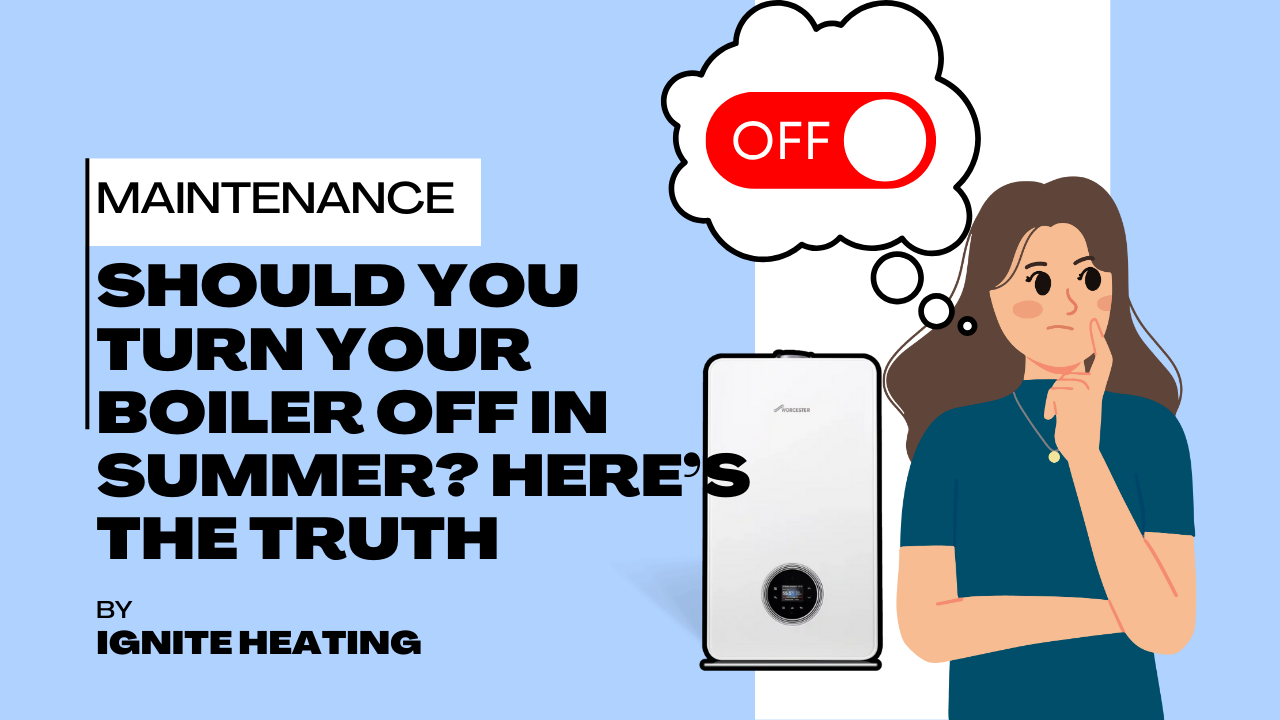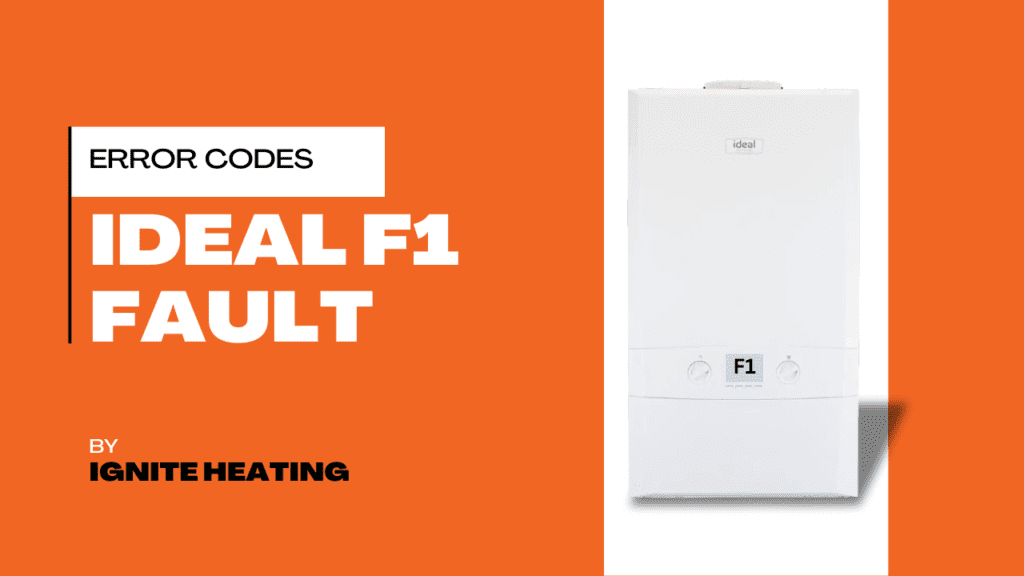
Should You Turn Your Boiler Off in Summer? Here’s the Truth.
Search Should You Turn Your Boiler Off in Summer? Here’s the Truth. Summer’s here finally. The sun’s shining (most days),

Imagine waking up on a freezing morning, looking forward to a warm, relaxing shower—only to be greeted by an icy blast instead. You rush to check your boiler, and there it is—the dreaded F1 error code flashing on the screen. If this has happened to you, don’t worry. This fault means your boiler’s water pressure has dropped too low, and while that might sound serious, it’s often a quick fix. However, ignoring it can lead to inefficient heating, repeated shutdowns, and even costly repairs. So, what’s behind this frustrating error, and how can you get your boiler running smoothly again? Let’s dive in.
If your boiler is displaying the F1 error, it’s because the pressure in your system has dropped too low. But why does this happen? Let’s break it down:
Water pressure naturally decreases due to evaporation or minor system inefficiencies, making routine top-ups essential. This is a normal part of a heating system’s operation, but if ignored, it can lead to a complete system shutdown.
Even a small leak in a radiator, pipe, or valve can steadily reduce pressure. Have you noticed any damp spots or dripping water? Leaks can be caused by corrosion, faulty pipework, or loose connections, all of which require professional attention.
Air pockets can disrupt pressure levels, particularly if you’ve recently bled your radiators. If trapped air accumulates, it can lead to circulation issues, causing uneven heating and a drop in pressure.
Sometimes, the issue isn’t with the pressure itself but with the sensor misreading the levels. A defective pressure sensor may trigger the F1 error even if the pressure is adequate, leading to unnecessary shutdowns.
The expansion vessel in your boiler helps regulate pressure fluctuations. If this component is damaged or loses its charge, it can cause sudden pressure drops, leading to the F1 error code.
Debris and sludge buildup within the system can prevent water from flowing properly, causing the pressure to decrease. This issue is particularly common in older heating systems that haven’t been flushed or serviced in a while.
If your boiler has recently undergone maintenance or installation, an improper refill or airlock in the system could be responsible for the pressure loss. Ensuring proper refilling procedures can prevent recurring F1 errors.
Your boiler isn’t just being dramatic—it’s protecting itself. Running on low pressure can lead to significant operational issues, including:
Increased wear and tear – Low pressure forces your boiler to work harder, straining components such as the pump and heat exchanger.
Reduced heating efficiency – With insufficient pressure, your boiler struggles to circulate water properly, causing cold spots in radiators and inefficient heating.
Potential overheating risks – If the water isn’t circulating as it should, certain areas within the boiler can overheat, leading to long-term damage.
Automatic safety shutdown – Modern boilers are designed to shut down if they detect unsafe operating conditions, such as low pressure, to prevent system failures and ensure user safety.
By shutting down when pressure drops too low, the boiler helps avoid damage, unnecessary fuel consumption, and costly repairs.
Locate the pressure gauge on your boiler. If it’s below 1.0 bar, your system needs a pressure boost. The gauge is usually found on the front panel of your boiler.
Locate the filling loop, typically a small, flexible silver hose underneath the boiler.
Slowly turn the valves to allow water into the system.
Watch the pressure gauge carefully and stop when it reads 1.2 to 1.5 bar.
Close the valves tightly to prevent leaks and ensure pressure stability.
Once the pressure is back within range, press the reset button on your boiler’s control panel. This will restart the system and allow the boiler to resume normal operation.
Still experiencing pressure drops? Conduct a thorough check for visible leaks in:
Radiators
Pipe joints
Boiler components If you spot any signs of water leakage, it’s time to call a Gas Safe registered engineer for professional repairs.
If your radiators are warm at the bottom but cold at the top, air may be trapped in the system. Here’s how to fix it:
Use a radiator key to slowly release the trapped air from the bleed valve.
Keep an eye on the pressure gauge while bleeding, as releasing air can sometimes lower pressure further.
Once done, repressurize the system if necessary.

If your boiler repeatedly loses pressure or the F1 error returns, a deeper issue may be at play, such as:
A persistent leak in the system
A malfunctioning pressure sensor
A faulty expansion vessel
Blockages due to debris buildup
Internal boiler faults
A Gas Safe registered engineer has the expertise to diagnose underlying issues and prevent further damage. Continuing to repressurize a faulty system without addressing the root cause could result in:
Increased risk of breakdowns
Wasted energy and higher utility bills
Potential long-term damage to your heating system
When you call a Gas Safe engineer, they will:
Conduct a thorough inspection to identify any leaks or failing components.
Test and replace faulty sensors to ensure accurate pressure readings.
Check the expansion vessel and repressurize or replace if necessary.
Flush the system if blockages or sludge buildup are detected.
Ensure safe operation by verifying all components are functioning correctly.
If you’re experiencing recurring F1 errors, getting professional assistance sooner rather than later can save you from expensive repairs and prolonged system downtime.
Nobody enjoys a surprise cold shower. Here’s how you can prevent the F1 error from returning:
Monitor your boiler pressure regularly (aim for at least once a month).
Bleed radiators periodically to keep the system running smoothly.
Schedule annual servicing to catch issues early.
Fix leaks promptly before they turn into bigger problems.
Consider a system flush if your heating system is older or has frequent pressure-related issues.
Check the expansion vessel periodically to ensure it’s maintaining proper pressure regulation.

Search Should You Turn Your Boiler Off in Summer? Here’s the Truth. Summer’s here finally. The sun’s shining (most days),

Search Should I Upgrade My Central Heating System Before Winter? Winter in the UK can be brutal, with freezing mornings,
© 2024 Ignite Heating. All rights reserved